"In the Eyes of the Beast" - MLF makes it possible to view the forest from the inside
I bring to your attention the translation of the article "In the Eyes of the Animal - MLF Virtualization of the Forest through the eyes of its creatures" .
“In the Eyes of the Beast” is the latest installation from the Marshmallow Laser Feast design studio, ordered for the AND Festival and located in the English park Gridale Forest. The project invites visitors on an exciting journey, which makes it possible to fly over the forest canopy, come face to face with living creatures created with high definition, materialize various animals and how they roam around Grendale Park.
The project continues the study of these lidars, begun by the team earlier this year. Having completed the development of the concept, the team made a filming of the Park Grindeil Forest using an optical sensor Faro X 330. The graphics processor produced an image of 800 million pixels. Subsequently, the resolution was reduced to the level required for normal real-time transmission.
')

In this project, the technologies for obtaining and processing remote sensing information using active optical systems (lidars), computed tomography and photogrammetry interact harmoniously, despite the difference in the principles of their work. Each scene of the plot contains numerous sets of environmental fragments, obtained from lidars, and fragments in motion, which were obtained by making computed tomograms of insects and animals. AMD Festival visitors are offered a unique opportunity to see the forest through the eyes of its inhabitants.
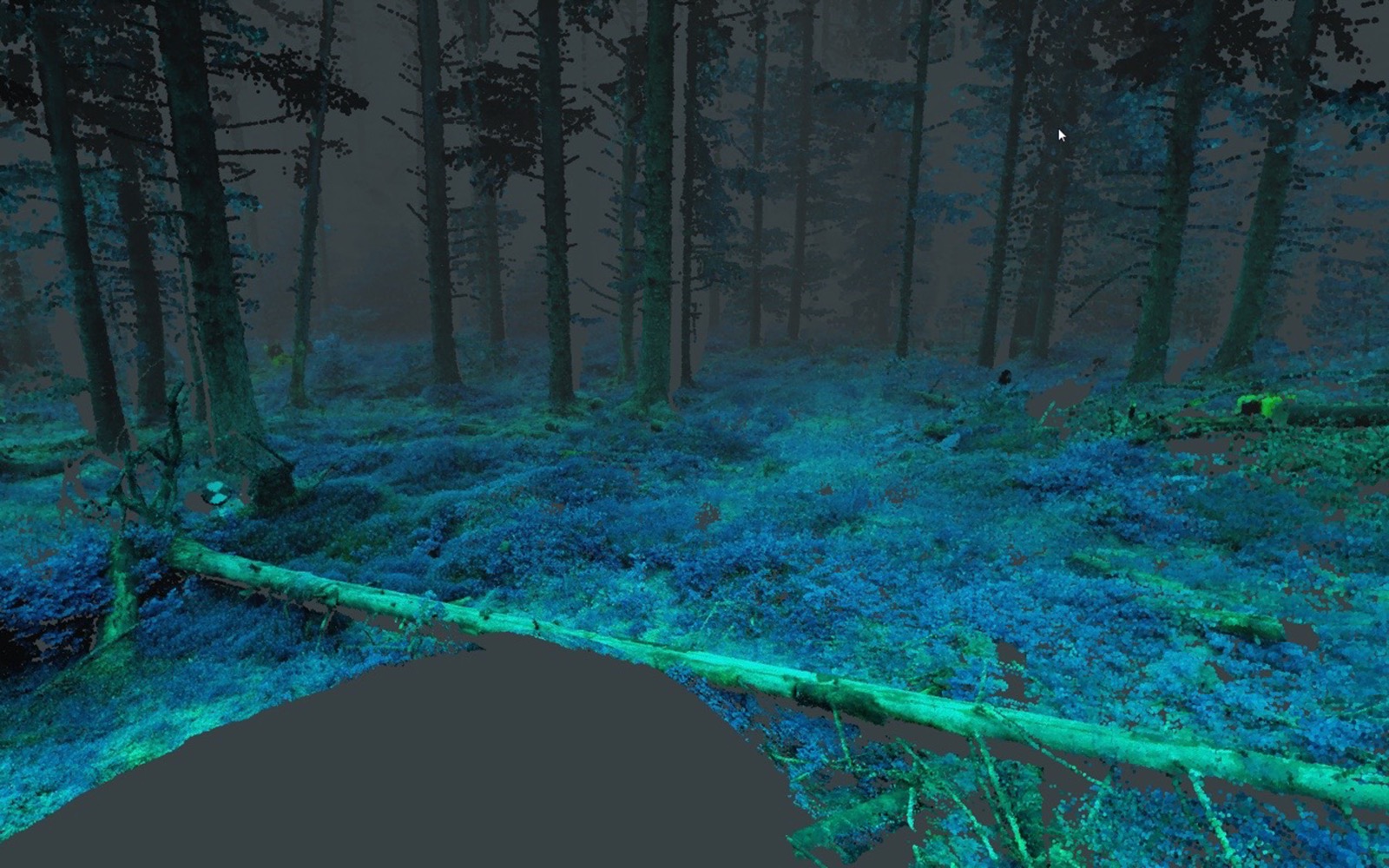
The main objective of the event was to create an understanding of how animals process optical information and, thus, give people the opportunity to reflect on their own visual perception of the forest.
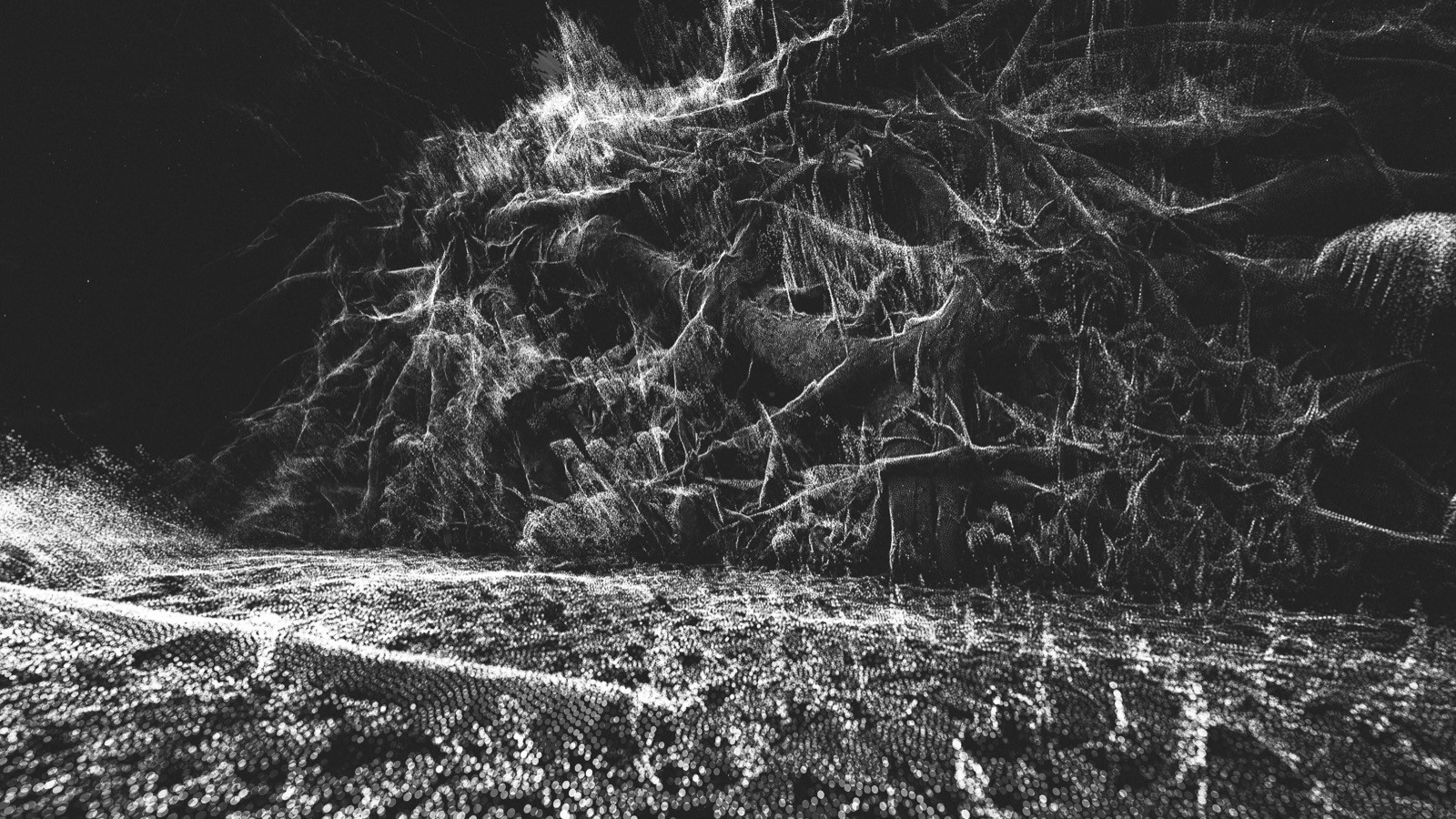
A real-time video engine was used by a vvvv program (a program for creating controlled multimedia shows on many screens) with an integrated shadow creation function based on HLSL and an audio module on Max MSP with a unique library of sounds in spatial transmission from Two Big Ears. Video engine develops and transmits the surrounding space in real time with special details that make each scene unique. The video engine interacts with the spatial audio engine using the OSC for transmitting location data, as well as tracking data on the user's head turning from inertial sensors from the multimedia helmet. The sound uses “Binaural sound”, a technology that imitates the natural work of the ear, by creating the illusion of three-dimensional space and movement around the listener's head.
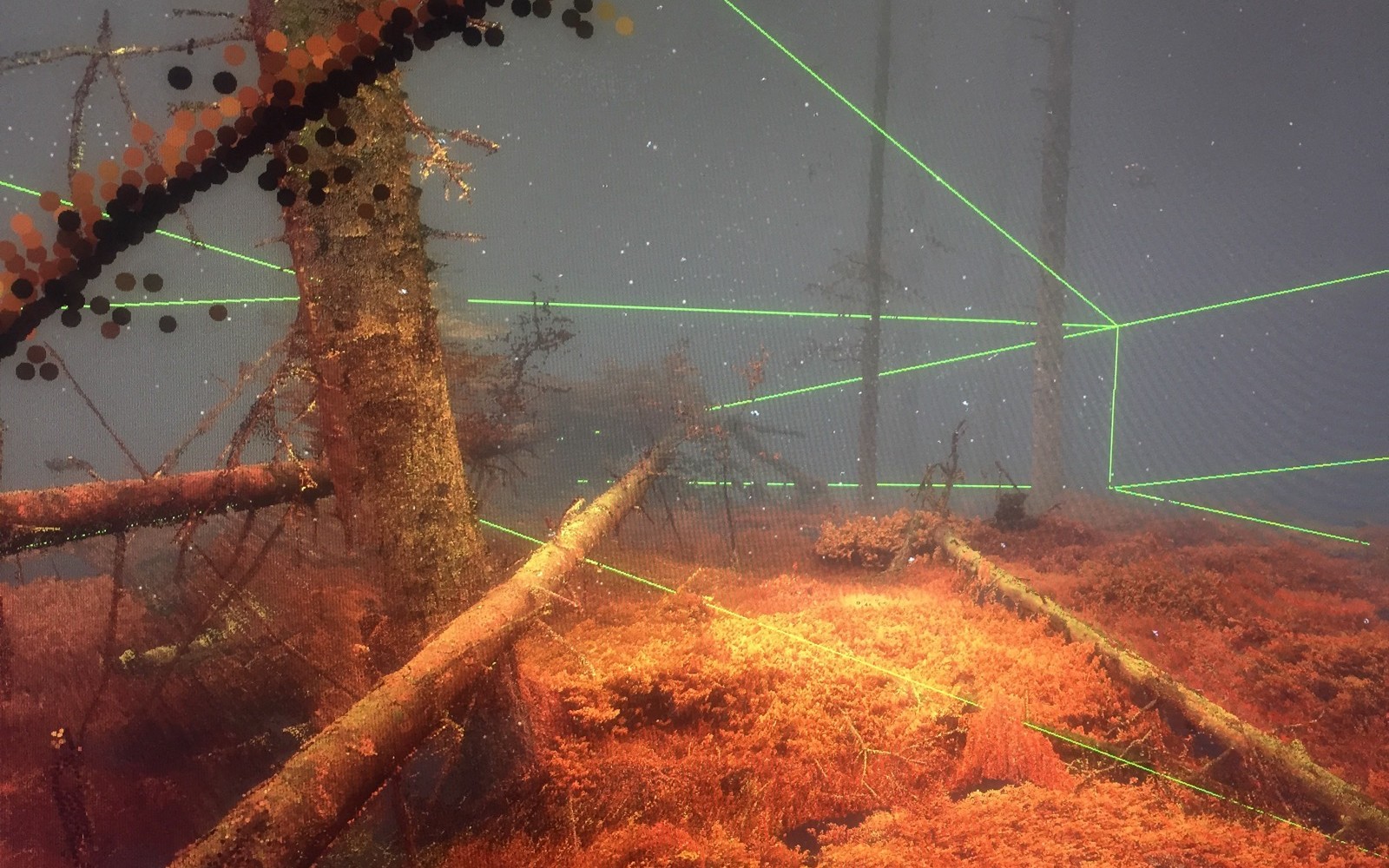
It gives the effect of maximum immersion. The sounds recorded in the Gridale Park were given spatial sound using custom-made spatial sound processing tools from Two Big Ears. The listener is surrounded by sounds from all sides in a circle, as well as below and above. The sound depends on the trajectory of the head and the video image before his eyes.
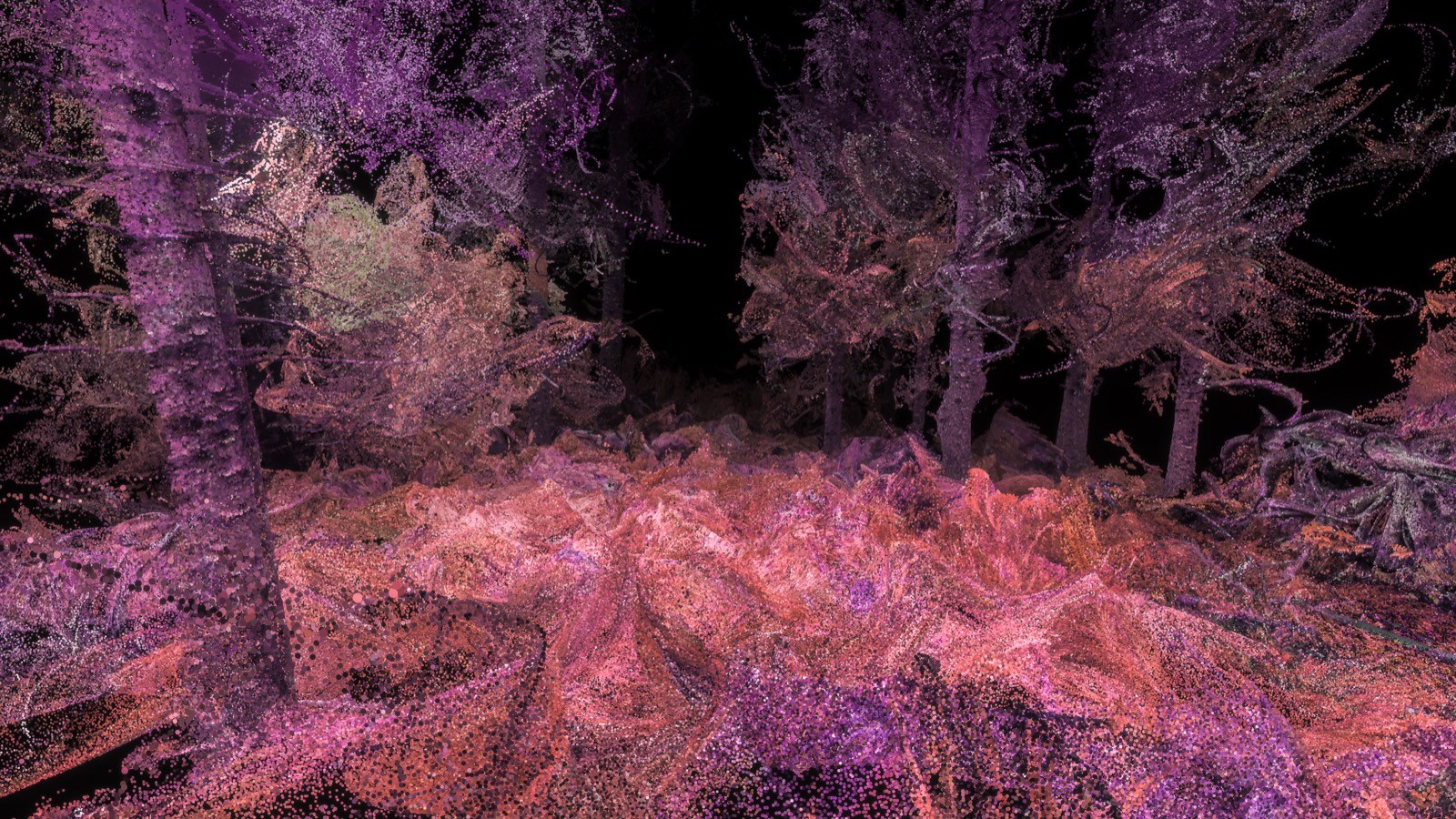
Sensations of sound reproduction go beyond the headphone limits and transfer to the whole body due to low-frequency vibration. Using M1 from SubPac, listeners could feel the vibrations of the body, as if reincarnating into breathing, flying and screaming animals. SubPac is an audio device with simultaneous exposure to a person through several channels of perception, transmitting low frequencies to the bones and muscles of the human body. The combination of these types of information allows the spatial audio engine to connect dynamic elements with sound sources, which are given spatial sound to enhance the effect of immersion in virtual reality.
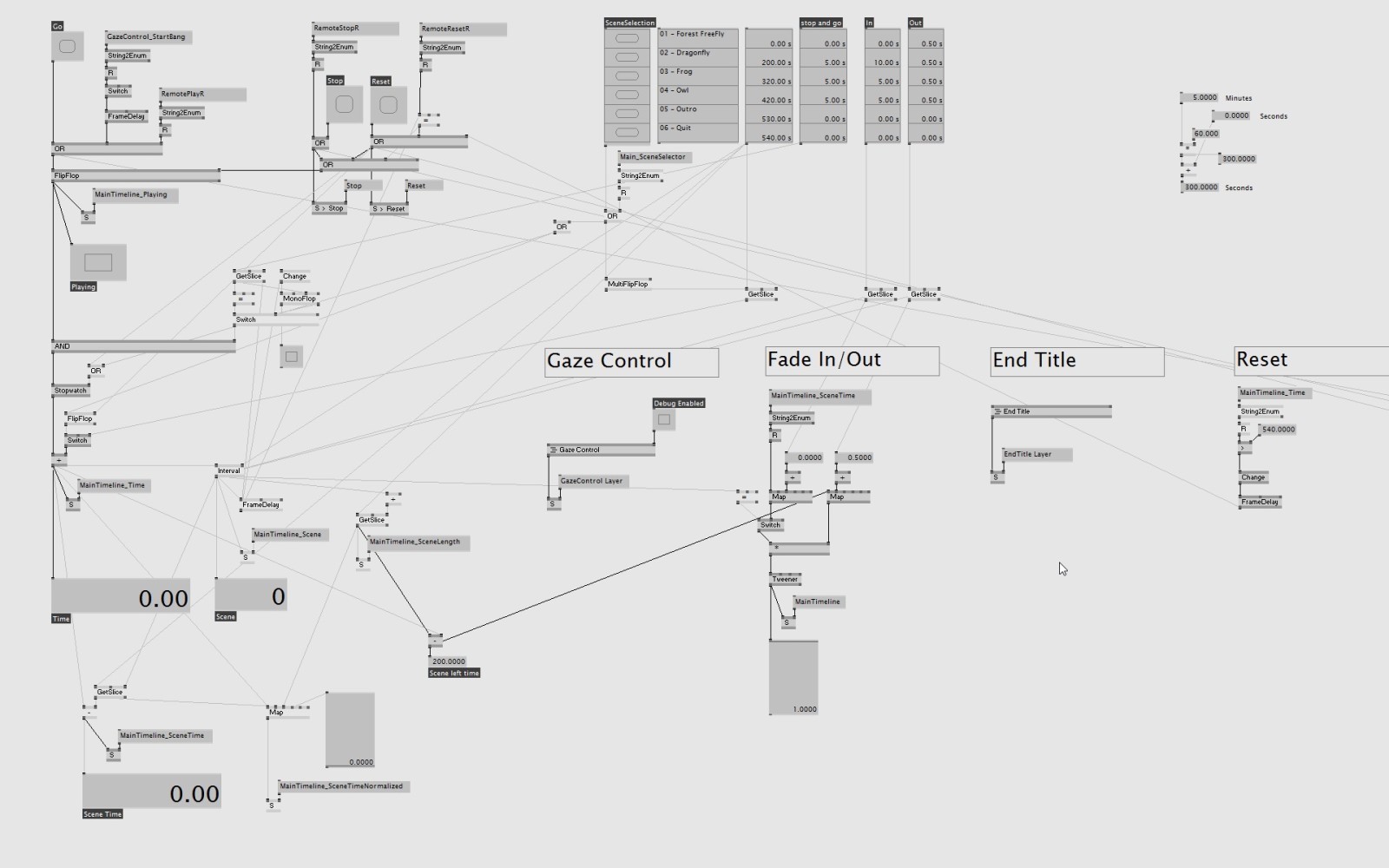
Main time ruler
The installation consists of 7 workstations with a Quadro M6000 graphic card, which makes it possible to simultaneously play back multiple images simulated in virtual reality.
Auxiliary programs such as: vvvv, Max MSP, Lidar Scanning, CT Scanning, Photogrammetry, SubPac M1, Oculus Rift DK2, HLSL Shading and DX11 were used. Stereo sound was developed by sound designer Antoine Bertin from the creative recording studio Sound Doesn Travel.
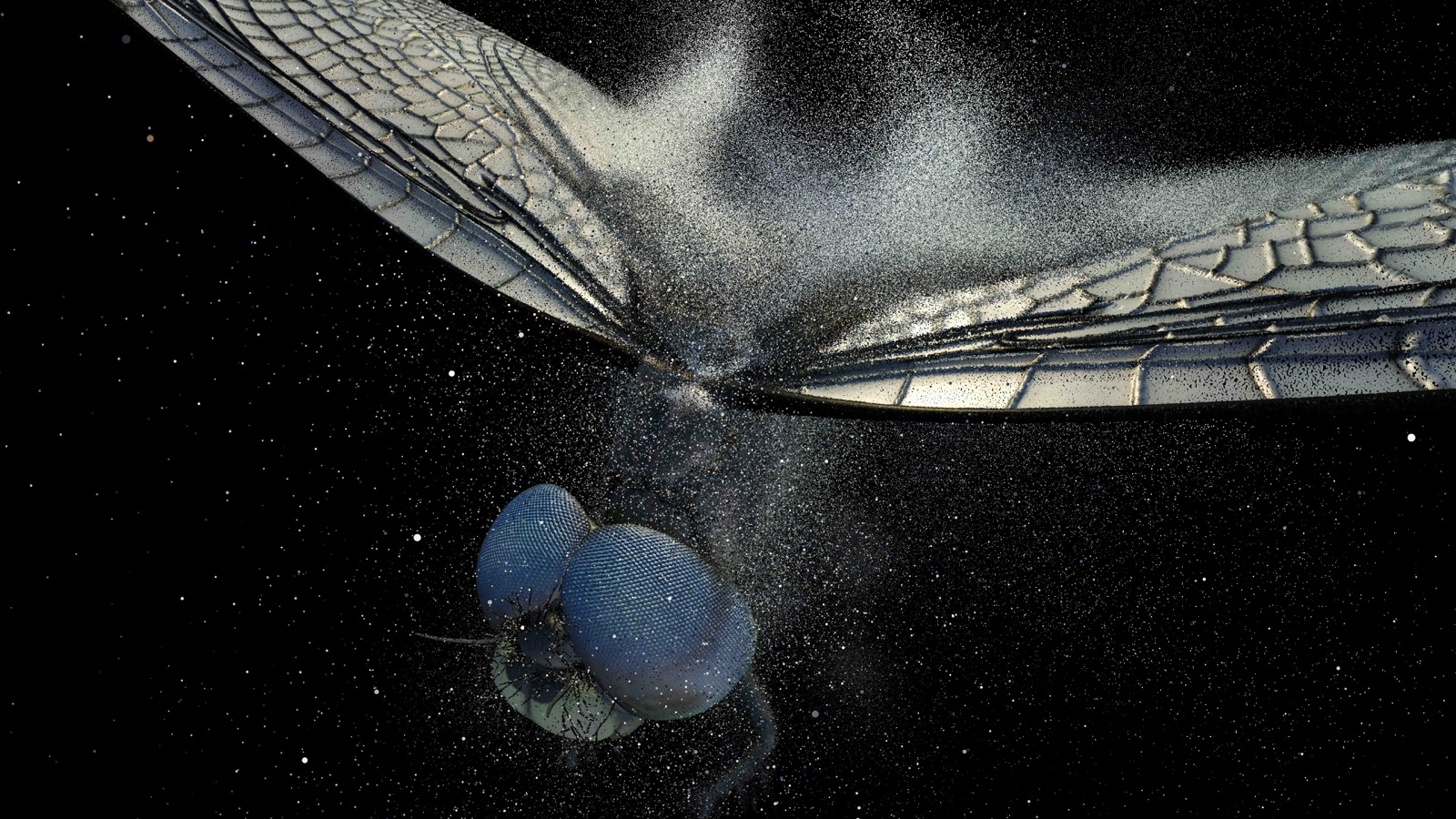
The project was created as an AND Festival trick, using the technical experience gained by the Project Daedalus research project, funded by Nesta, and intended to explore the creative potential of UAVs and aerial cameras with a 360 ° overview.
Management: Abandon Normal Devices (a new regional festival of modern cinema, digital culture and art) and the Department of artistic creation of the Reserve of England, which is under the jurisdiction of the State Commission on Forestry.
“In the Eyes of the Beast” is the latest installation from the Marshmallow Laser Feast design studio, ordered for the AND Festival and located in the English park Gridale Forest. The project invites visitors on an exciting journey, which makes it possible to fly over the forest canopy, come face to face with living creatures created with high definition, materialize various animals and how they roam around Grendale Park.
The project continues the study of these lidars, begun by the team earlier this year. Having completed the development of the concept, the team made a filming of the Park Grindeil Forest using an optical sensor Faro X 330. The graphics processor produced an image of 800 million pixels. Subsequently, the resolution was reduced to the level required for normal real-time transmission.
')

In this project, the technologies for obtaining and processing remote sensing information using active optical systems (lidars), computed tomography and photogrammetry interact harmoniously, despite the difference in the principles of their work. Each scene of the plot contains numerous sets of environmental fragments, obtained from lidars, and fragments in motion, which were obtained by making computed tomograms of insects and animals. AMD Festival visitors are offered a unique opportunity to see the forest through the eyes of its inhabitants.

The main objective of the event was to create an understanding of how animals process optical information and, thus, give people the opportunity to reflect on their own visual perception of the forest.

A real-time video engine was used by a vvvv program (a program for creating controlled multimedia shows on many screens) with an integrated shadow creation function based on HLSL and an audio module on Max MSP with a unique library of sounds in spatial transmission from Two Big Ears. Video engine develops and transmits the surrounding space in real time with special details that make each scene unique. The video engine interacts with the spatial audio engine using the OSC for transmitting location data, as well as tracking data on the user's head turning from inertial sensors from the multimedia helmet. The sound uses “Binaural sound”, a technology that imitates the natural work of the ear, by creating the illusion of three-dimensional space and movement around the listener's head.

It gives the effect of maximum immersion. The sounds recorded in the Gridale Park were given spatial sound using custom-made spatial sound processing tools from Two Big Ears. The listener is surrounded by sounds from all sides in a circle, as well as below and above. The sound depends on the trajectory of the head and the video image before his eyes.

Sensations of sound reproduction go beyond the headphone limits and transfer to the whole body due to low-frequency vibration. Using M1 from SubPac, listeners could feel the vibrations of the body, as if reincarnating into breathing, flying and screaming animals. SubPac is an audio device with simultaneous exposure to a person through several channels of perception, transmitting low frequencies to the bones and muscles of the human body. The combination of these types of information allows the spatial audio engine to connect dynamic elements with sound sources, which are given spatial sound to enhance the effect of immersion in virtual reality.

Main time ruler
The installation consists of 7 workstations with a Quadro M6000 graphic card, which makes it possible to simultaneously play back multiple images simulated in virtual reality.
Auxiliary programs such as: vvvv, Max MSP, Lidar Scanning, CT Scanning, Photogrammetry, SubPac M1, Oculus Rift DK2, HLSL Shading and DX11 were used. Stereo sound was developed by sound designer Antoine Bertin from the creative recording studio Sound Doesn Travel.

The project was created as an AND Festival trick, using the technical experience gained by the Project Daedalus research project, funded by Nesta, and intended to explore the creative potential of UAVs and aerial cameras with a 360 ° overview.
Management: Abandon Normal Devices (a new regional festival of modern cinema, digital culture and art) and the Department of artistic creation of the Reserve of England, which is under the jurisdiction of the State Commission on Forestry.
Source: https://habr.com/ru/post/367721/
All Articles